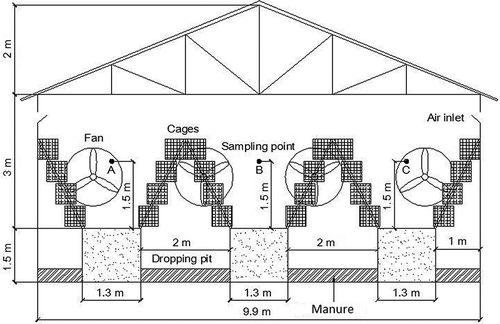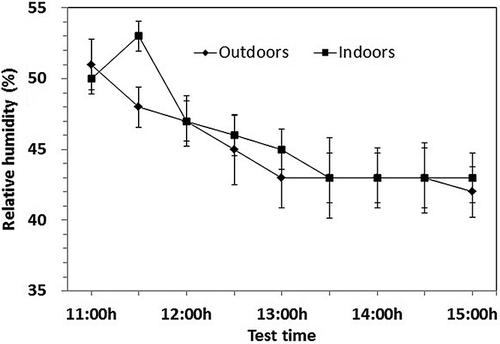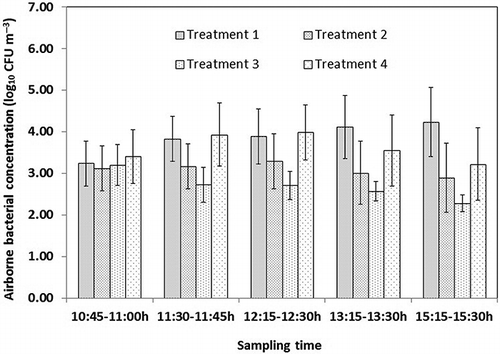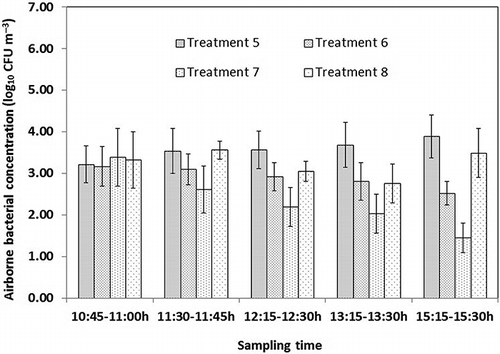Figures & data
Figure 1. Longitudinal section view of the laying-hen house. Airborne bacterial measurements were performed at points A, B, and C to compare bacterial reductions by spraying disinfectants. Air temperature and relative humidity were measured at point B and outside of the building.

Figure 2. Cross-section view of the laying-hen house. Airborne bacterial measurements were performed at points A, B, and C to compare bacterial reductions by spraying disinfectants. Air temperature and relative humidity were measured at point B and outside of the building.

Table 1. Disinfectants used in the experiment
Figure 3. Air temperature outdoors and indoors during the test period. Vertical bars represent means ± standard errors.

Table 2. Experimental treatments in the laying-hen house
Figure 4. Relative humidity outdoors and indoors during the test period. Vertical bars represent means ± standard errors.

Figure 5. Airborne bacterial concentration variations in the control, treatment 1, and treatment 5. Spraying diluted DDAB (167 mg L−1) and SAEW (156 mg L−1) were administrated starting at 11:00 a.m. in the amount of 120 mL m−2 in treatment 1 and treatment 5, respectively. No spraying was carried out in the control. Vertical bars respect means ± standard deviations with n = 12 (3 sampling points each day, 4 sampling days).

Figure 6. Airborne bacterial concentration variations in treatment 1, treatment 2, treatment 3, and treatment 4. Spraying diluted DDAB (167, 333, and 500 mg L−1) in the amount of 120 mL m−2 and spraying diluted DDAB (333 mg L−1) in the amount of 90 mL m−2 were administrated starting at 11:00 a.m. in treatment 1, treatment 2, treatment 3, and treatment 4, respectively. Vertical bars respect means ± standard deviations with n = 12 (3 sampling points each day, 4 sampling days).

Figure 7. Airborne bacterial concentration variations in treatment 5, treatment 6, treatment 7, and treatment 8. Spraying SAEW (156, 206, and 262 mg L−1) in the amount of 120 mL m−2 and spraying SAEW (262 mg L−1) in the amount of 90 mL m−2 were administrated starting at 11:00 a.m. in treatment 5, treatment 6, treatment 7, and treatment 8, respectively. Vertical bars respect means ± standard deviations with n = 12 (3 sampling points each day, 4 sampling days).
